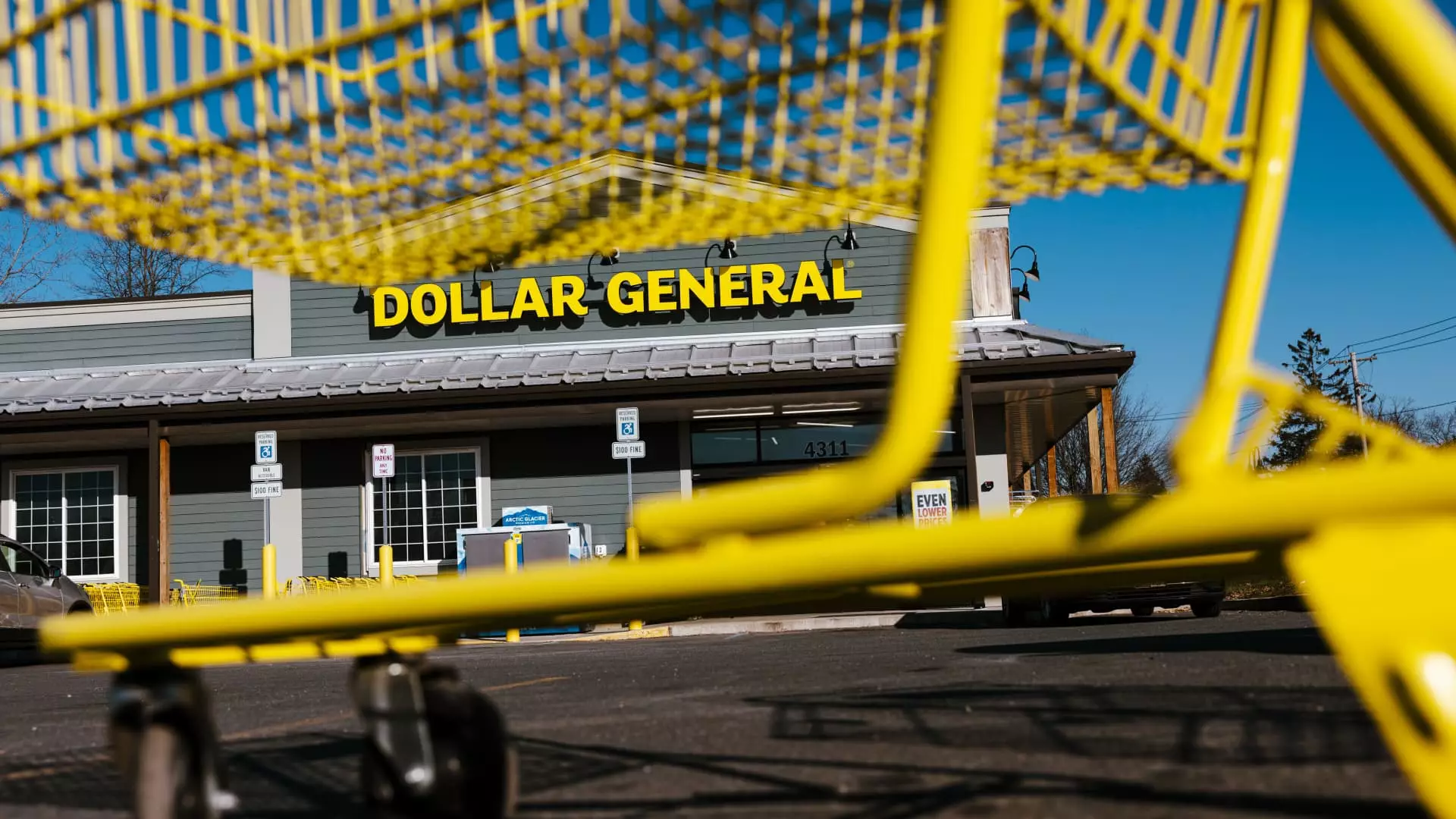In an enlightening yet concerning report released recently, Dollar General showcased a mixed bag of results for its fiscal fourth quarter. While the company narrowly exceeded revenue expectations with figures reaching $10.3 billion, its net income plunged significantly, falling to only $191 million compared to $402 million in the same quarter the previous year. For a corporation that typically thrives amid economic hardship, this discrepancy raises alarming red flags concerning its foundational strategy in an increasingly competitive marketplace.
The overarching narrative isn’t simply about disappointing profit margins; it unveils a deeper malaise afflicting the dollar-store giant. The company’s leadership has acknowledged a shaky economic landscape where consumers, as CEO Todd Vasos put it, “only have enough money for basic essentials.” This stark admission points not only to a potential erosion of the customer base that Dollar General relies on but also highlights an unsettling trend of decreased consumer spending that could have ramifications well beyond the confines of a single business.
Store Closures: A Strategic Retreat or Destructive Miscalculation?
In alignment with the ongoing review of its store portfolio, Dollar General has announced the closure of 96 Dollar General and 45 Popshelf stores, in addition to rebranding some Popshelf locations into flagship stores. This drastic decision sends a clear signal that management is taking deliberate steps to reassess their operational landscape; however, it also raises the wearisome question of whether these store closures will address systemic weaknesses or simply serve as a band-aid for gaping wounds.
The choice to shutter nearly one percent of its overall store base should prompt shareholders to reflect critically on the company’s long-term strategies. Is Dollar General clinging to a failing model, or is it proactively repositioning itself for an uncertain future? The reallocation of resources and transformation of certain stores may indeed allow it to cater to a higher-income demographic, but such a shift could alienate the very customers who have traditionally flocked to its doors for budget-friendly essentials.
Competitive Pressures and the Age of E-Commerce
As inflation levels loom large over consumers, imposing painful decisions on their spending habits, the dollar-store sector finds itself in an increasingly competitive environment. With Walmart amplifying its e-commerce presence and expanding its array of offerings, Dollar General might be on the verge of losing clientele that has nowhere to travel but the digital aisle.
In an effort to adapt, Dollar General has announced its intent to introduce approximately 100 new private-brand products. While diversifying its product range is commendable, it is essential for the company to simultaneously invest in technological advancements and logistical capabilities to properly serve this expanded inventory. Simply refreshing its shelves might not be enough to keep up with larger competitors, who can absorb the same inflationary pressures while offering customers greater convenience.
Projecting Forward: The Delicate Tightrope of Growth
Forecasting growth in 2025 between 3.4% to 4.4% is a cautious approach, particularly given that Wall Street projected slightly higher figures. The gap between expected earnings per share and actual goals hints at potential managerial hesitance. Stakeholders, already concerned by a staggering 49% drop in quarterly operating profit, may find it challenging to be optimistic about the company’s sustainability.
In the coming fiscal year, Dollar General’s ability to navigate shifting consumer demands, enhance logistical frameworks, and prevent further disruptions in its store portfolio will be critical. The company might need to strike a strategic balance that retains loyalty among its traditional customer base while effectively courting higher-income shoppers. Only time will tell if Dollar General can transform its present challenges into future opportunities or if it will become yet another cautionary tale of mismanaged growth in a complex economic landscape.

